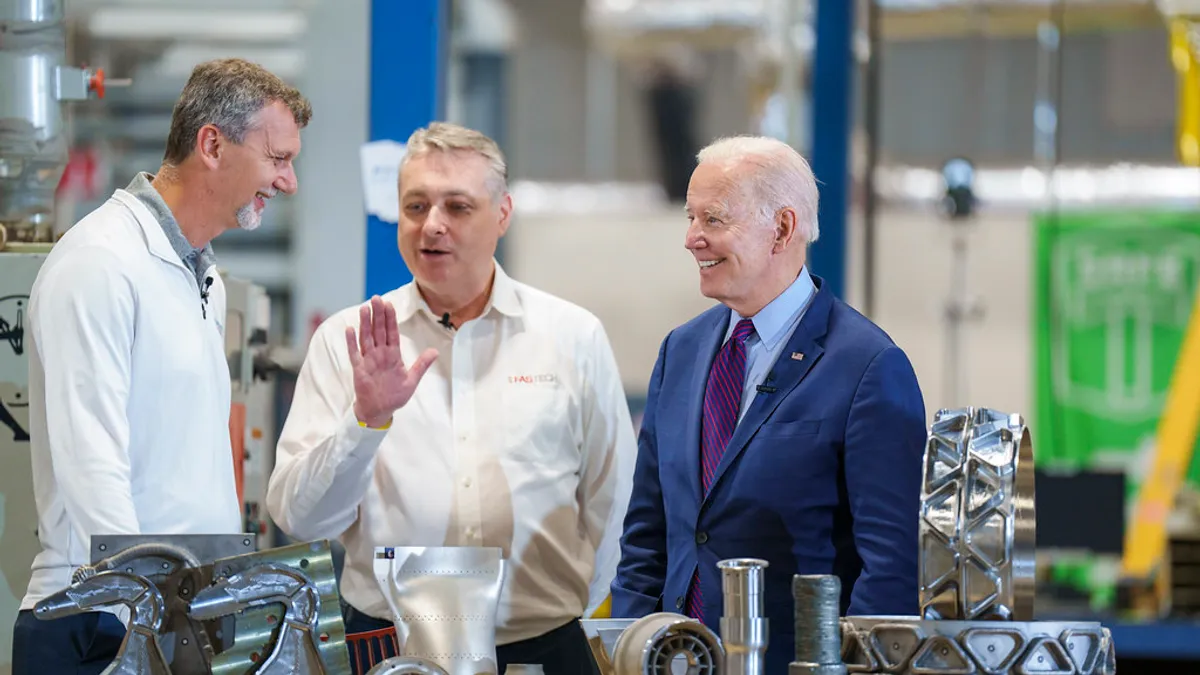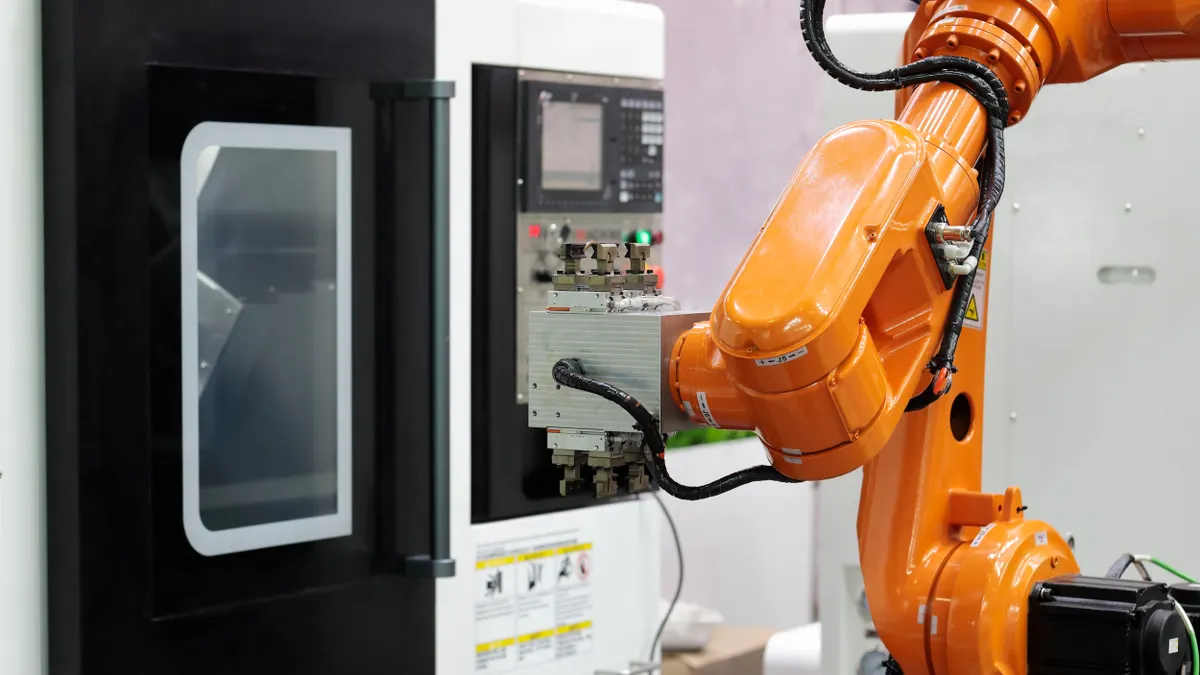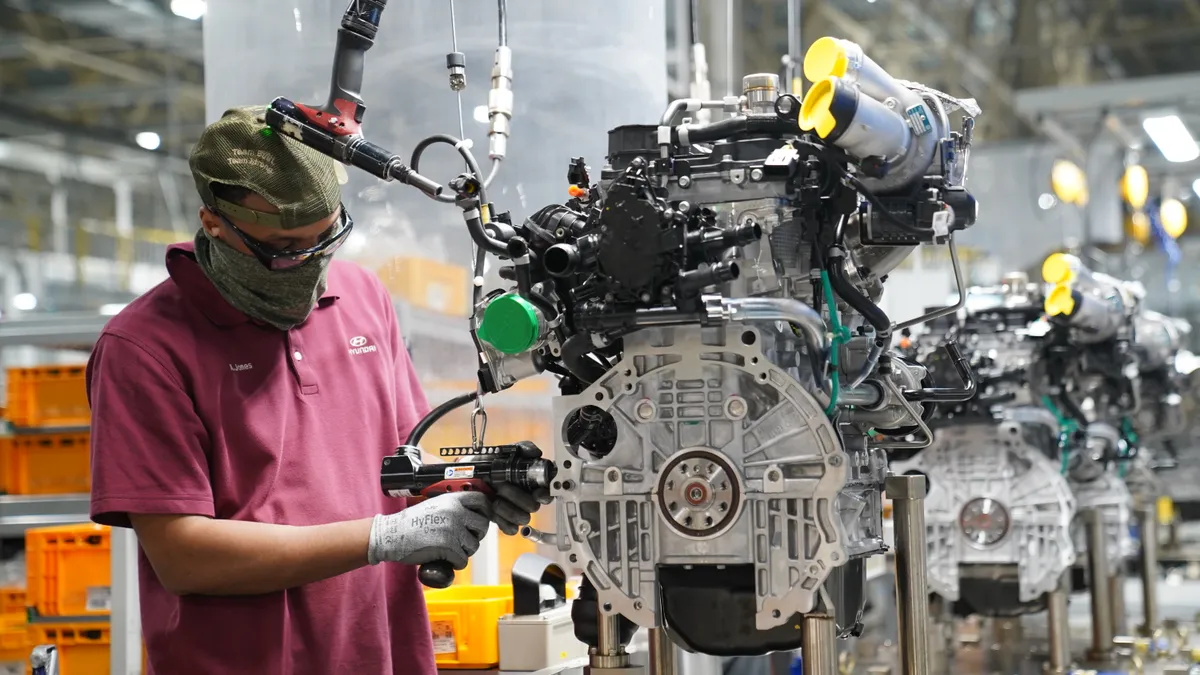Susan Helper has spent much of her career investigating the hidden costs within supply chains.

Whether it was as a professor at Case Western Reserve University, the chief economist in the Department of Commerce or as an advisor to the Obama and Biden administrations, Helper has spent decades investigating how the public and private sector balance short-term goals with the need for supply chain resilience.
“It's not like resilience has to cost more,” Helper said in an interview with Supply Chain Dive. “If we transform the system through agility, we can actually get more resilience and better outcomes for consumers, for workers and for firms.”
Now, as senior advisor for industrial strategy at the White House Office of Management and Budget, she is helping advance several policies that emphasize how the U.S. can use its vast resources to better support small manufacturers and recognize the pivotal role they play in the supply chain.
Helper pointed to several examples in her career of ways the government has used procurement tactics to bolster manufacturing supply chains, from using the executive branch’s influence over legislation to leveraging its role as the world's largest purchaser. Here's a deeper look.
1. Create a clear demand signal
When private companies make high-dollar bets to invest in new production, it helps to know there will be clear demand for increased capacity.
Enacting several laws specifically targeting semiconductor and clean energy supply chains was an important step to spur a wave of investments in the industry. However, Helper said she has learned “sending the demand signal saying there’s a ton of money out there doesn’t automatically unleash investment.”
She pointed to efforts to build out EV charging infrastructure as an example of the combination of tools policymakers must employ to attract U.S.-based investment.
“There were no manufacturers of [DC fast charging] equipment in the U.S. two years ago. Now, there are at least 11,” she said, before asking rhetorically, “How did that happen?”
The “screaming demand” for U.S.-built charging infrastructure had to be created by a combination of subsidies and signals, Helper added. The U.S. dedicated $7.5 billion to building the infrastructure, before mandating that chargers funded by the Bipartisan Infrastructure Law be made in the U.S.
But also important was a long-term signal that there would be sustained demand to support investment in the chargers, such as the goal automakers and the Biden administration set to have 40% to 50% of annual light-vehicle sales be EVs by 2030.
“All that kind of creates certainty,” said Helper. “If you're a small business, you get kind of one bet and if you invest in something and there's no demand there, that's not great.”
2. The power of convening
When the president calls, people answer — and that power alone has proved a critical tool for spurring investments in critical areas like semiconductors and additive manufacturing.
While the CHIPS and Science Act unleashed a large sum of money for manufacturing projects, automakers and chipmakers had historically lacked direct communication. By bringing such stakeholders together to discuss how to use the funding, results followed.
“As a fairly direct result of White House convenings, Ford and GM met large semiconductor providers and actually have set up some alliances and joint projects,” Helper said. “So this kind of physical meeting is absolutely important.”
Other White House initiatives have worked to drive demand signals in emerging production sectors, including AM Forward, an initiative launched last year to propel the adoption of additive manufacturing.

AM Forward is a commitment from the government and a group of iconic U.S. manufacturers like Boeing, GE and Honeywell to giving small manufacturers the support they need to adopt the 3D-printing technology by providing technical knowledge, access to financing and sending a clear demand signal that additive manufacturing is a sound investment.
Helper said large customers such as OEMs had been about asking their procurement teams to source from additive manufacturers because they were unsure the supply existed.
“And then conversely, if you think there's no demand, particularly if you're a small business, you're not going to invest in something,” Hepler said, adding programs like AM Forward solve “a chicken and egg problem that you see in a bunch of new advanced technologies.”
3. Leveraging the government’s role as a purchasing organization
The US is the world’s largest purchaser by spend and it uses that distinction as a way to inject funds into the economy.
As part of the total spend, government procurement teams bought $259 billion in products during fiscal year 2022, including dollars spent on non-defense-related products like drugs, precious metals, medical supplies, motor vehicles and telecommunications. When including services, the government spent $694 billion through contracts that year.
Recognizing that role, the government has set an annual goal of directing 23% of its contract spend towards small businesses since at least 2014 and has beat it each year, according to Small Business Administration records. In FY2022, the government directed 26.5% of contract spend, or $162.9 billion, towards small businesses.
“We actually buy a lot of things,” said Helper. “And if we can do that in a way that helps small business that helps achieve our goals, we actually have a lot of power there.”
4. Modeling good procurement behavior
How a firm spends its money is just as important as how much money it spends on any initiative, and the same goes for the U.S. government.
In previous administrations, Helper has worked on initiatives that aim to role model good procurement practices in hopes of influencing others. One such example is through quick pay initiatives: Under the Obama administration, the U.S. government committed to paying contractors within 15 days.
The initiative was credited with helping save small manufacturers more than $1 billion in three years, as Helper’s research has shown large enterprises have a greater ability to absorb costs than their suppliers, which may pay higher interests from delayed payments.
“If you pay your suppliers in 180 days instead of 30 days, essentially what you're doing is asking your supplier to loan you money,” Helper said.
The Obama administration expanded its initiative to more than two dozen companies — including large manufacturers like Apple, Nissan, IBM and Johnson & Johnson — signing a “SupplierPay Pledge” to either pay suppliers faster or provide them access to financing, among other tactics.
Helper has seen other companies adopt similar tactics and said it is part of an increasingly important strategy: using supplier-friendly purchasing as a way to boost resilience.
“If we transform the system through agility, we can actually get more resilience and better outcomes for consumers, for workers and for firms.”
Susan Helper
Senior Advisor, White House Office of Management and Budget
She said while it’s understandable for companies to want to tap the “opium” of the purchasing budget as a cost center, raising profits by limiting purchase orders or extending payment terms, those strategies come at a long-term cost by weakening suppliers’ ability to invest, improve or even survive.
By contrast, if companies are able to provide their suppliers with long-term demand signals, access to financing through payment programs and other support, Helper’s research shows small manufacturers in the supply chain will have the ability to invest in their own problemsolving capabilities and workers.
“If you build these long-term relationships, you do things over the long term that actually mean that your total system costs fall,” Helper said.




















